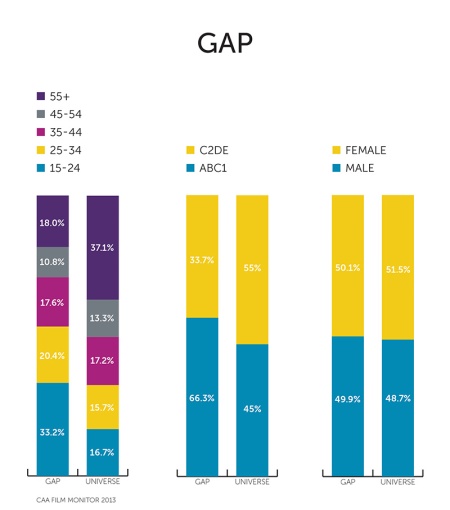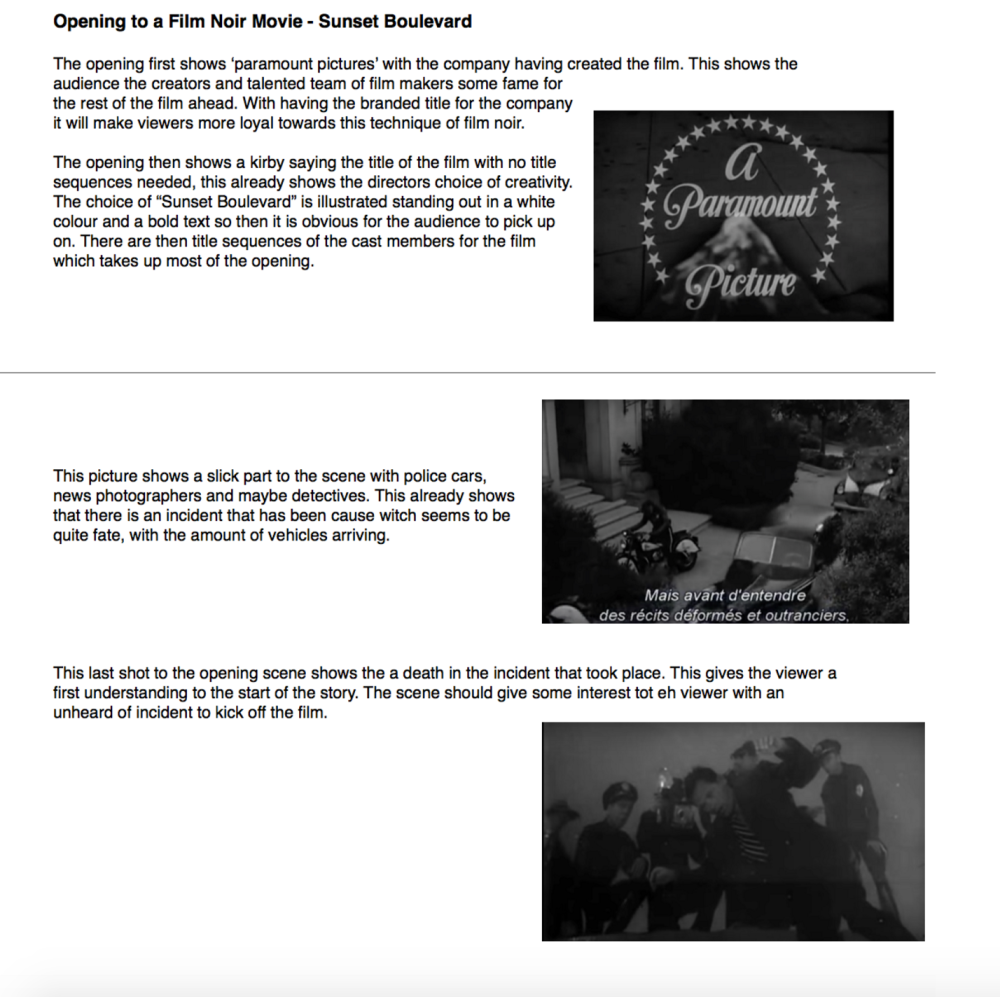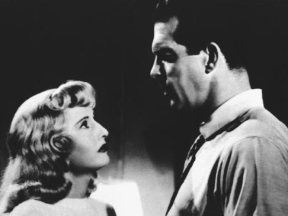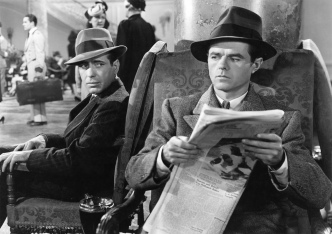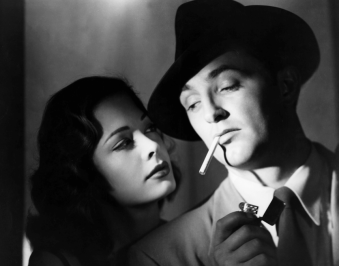Annotating 9 Screen Shots on a Film Noir Opening
This is a key shot because it is the first glimpse of the film. It represents where the opening of the film is set and a rough explanation of reason to why there is a tower in the centre of the shot. This in an inspirational shot because it gives a sense of hierarchy with the height of the tower and he audience looking up towards it.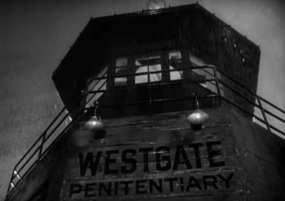
This shot is key because it titles the production company for the whole film. This makes the audience loyal to the companies films for the near future if the film “Brute Force” is successful. This shot is an inspiration because the title “Mark Hellinger”Productions” is a two part classic film noir company which people enjoyed watching.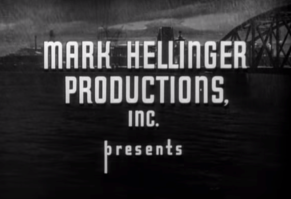
This shot is an important glance at the time the opening scene is taken. The shot shows a clock with concrete surrounding it, which shows that it is in an area which is perhaps not so wealthy. The dull colour from the screen shot also backs this up with the shot looking poor. The inspiration gives off the dull image of black and white giving age to the film.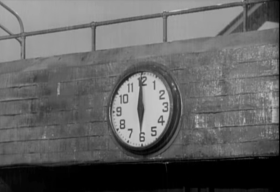
This shot represents prison cells with high roofs and stairs escalating to the ceilings. This shot is key because it gives a wide view of the main area to the movie. It’s also important because it gives an idea to how serious the prison is, giving an idea to what the prisoners have done to cause the sentences. This give a sense of inspiration showing how big a set was back in 1947, and how films today show lots of wide angled shots.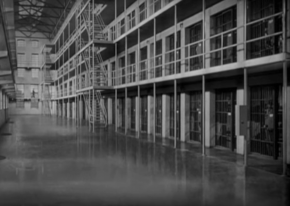
This shot is important to the opening to “Brute Force” because it shows the scene to where a prisoner states the obvious that he’s always going to be in the cell till he dies, This is inspirational because he tells the guards by singing the statement in lyrics. This is very traditional for early film because lots of it contains singing or dancing.
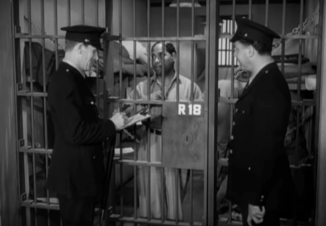
This shot is including the prisoners looking at a rich looking car with a new prisoner that is yet to suffer in the cells. This is a key shot because it presents the prisoners over looking something that seems is a rare event that is interesting for them to spectate. This gives inspiration to viewers showing the interest that people in the cells had chose to look outside to see if there is something to perhaps enjoy or to get more information for their surroundings.
This shot shows reality of cells in the late 1940’s, with the cell mates sharing small stories of what they’ve experienced that has reminded them with relation to what is happening in the scene. The shot gives viewers an inside look to what prisons look like with reality characters and interior mise en scene. The shot is an inspiration towards the audience giving a usage of well done costume with one person topless and one in a cell outfit. This also shows how prisoners lived during this period of time.
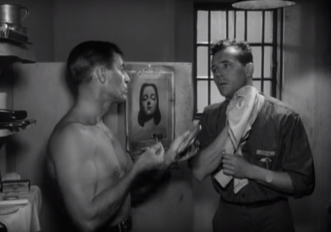
This shot shows a car leaving the prison looking well shot, this is because the cinematography is angled centre with the opening doors giving a very long shot. This is key with the car leaving the prison, so this gives the audience that the car just dropped off the prisoner. This is inspirational showing that the camera is stable with the rain clattering in the background. Rain obviously doesn’t make a difference with the cameras being static focusing on moving objects.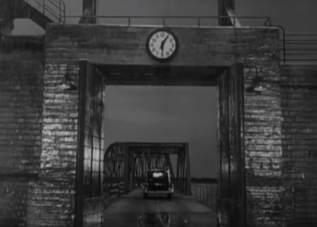
This shot shows a prisoner looking out over the court yard entrance to the jail looking at what the earlier prisoners were looking at. This shot is key because the editing shows clearly that the two cells connect to show the two views of looking at the car in the entrance. This is inspirational because editing has improved over the time period from when this film was created.
Point 15 – Describing Key Shots and Inspirations
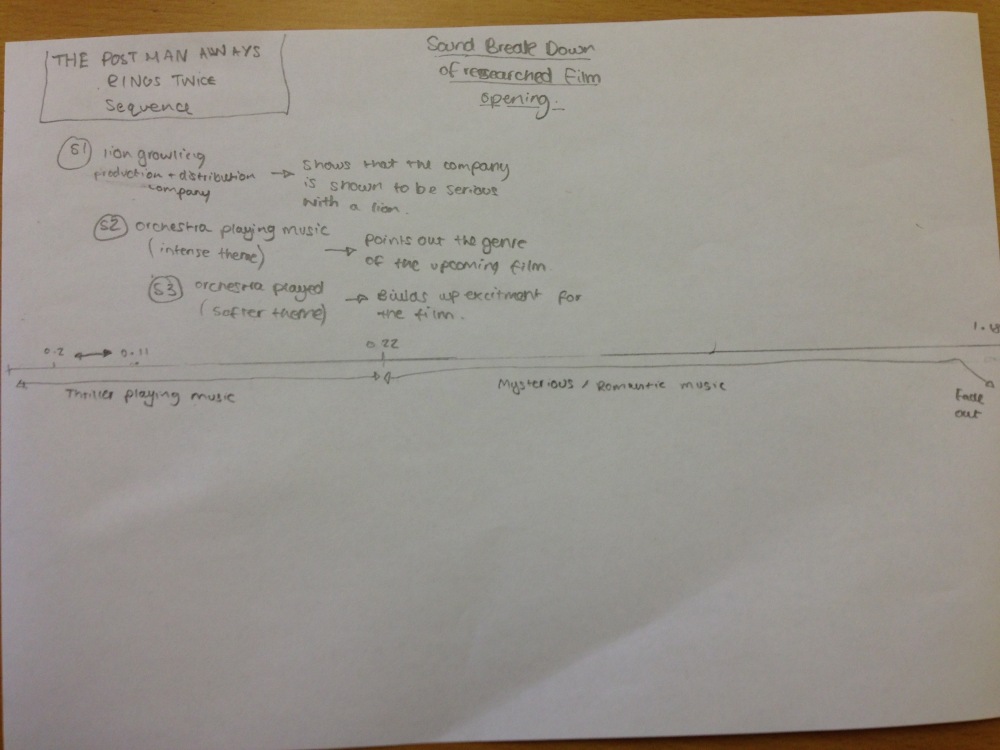
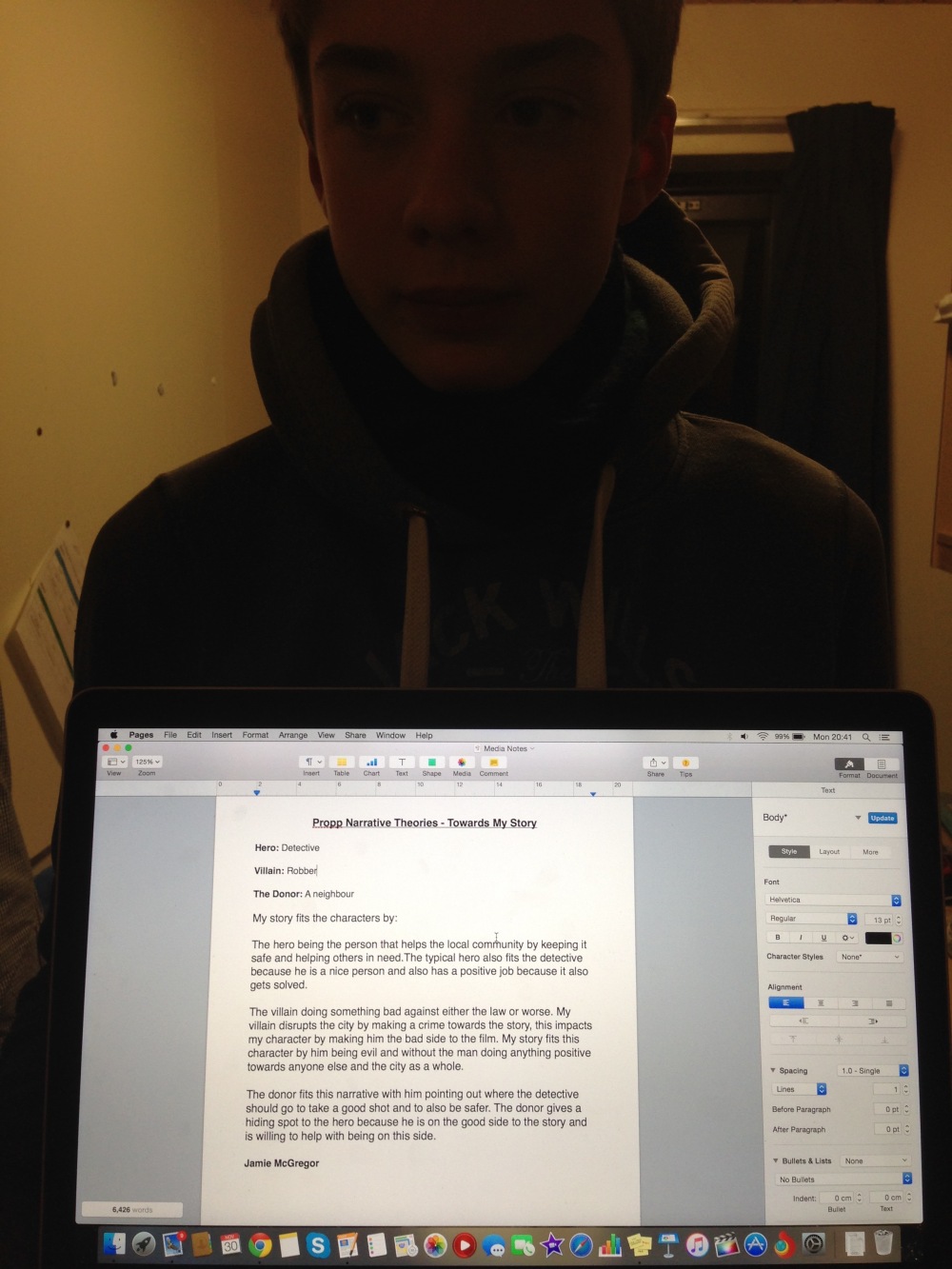 Point 26: Relating the Propp Narrative to my Film
Point 26: Relating the Propp Narrative to my Film


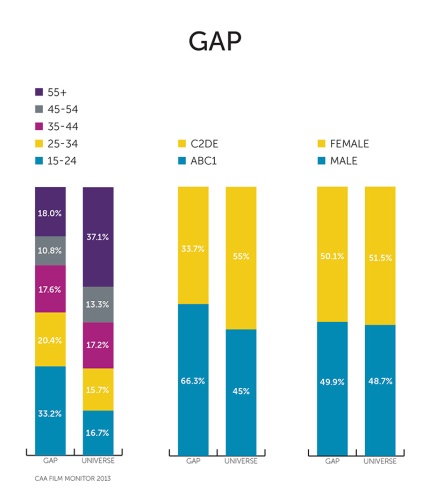 Point 20: Categories of audiences + comparing to our film
Point 20: Categories of audiences + comparing to our film

